Bear attacks, 90mph winds, isolation: living on Alaska's edge
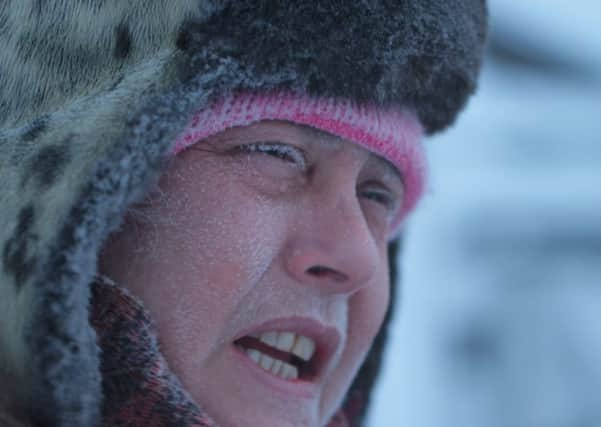

Brutally attacked by a bear, left for dead, yet after lying injured for days, comes back to tell the tale. Leonardo DiCaprio? No, real life revenant Sue Aikens who manages to thrive in one of the most hostile environments on earth, the wild North Slope of Alaska.
Aikens is currently starring in Travel Channel’s Life Below Zero, along with “near” neighbours Chip and Agnes Hailstone, who live around 1,000 miles away with their seven children on the west coast of the state. The reality show invites us into the lives of those living hundreds of miles from the nearest settlements, at the mercy of the elements and reliant on their survival skills to stay alive.
Advertisement
Hide AdAikens runs a B&B at Kavik River Camp, a former oil pipeline camp that is 500 miles from the nearest city, Fairbanks, and 80 miles from the closest road. Open from June to September, it attracts hunters, ornithologists and scientists, but the rest of the year Aikens lives there alone in a tent. The ground is frozen year round, it’s dark for months on end, and if the generator fails or the buildings need repaired, it’s Aikens who has to get out there. Working in winds that can reach 90mph, and temperatures of -90, she’s always vulnerable to being attacked by a grizzly bear.
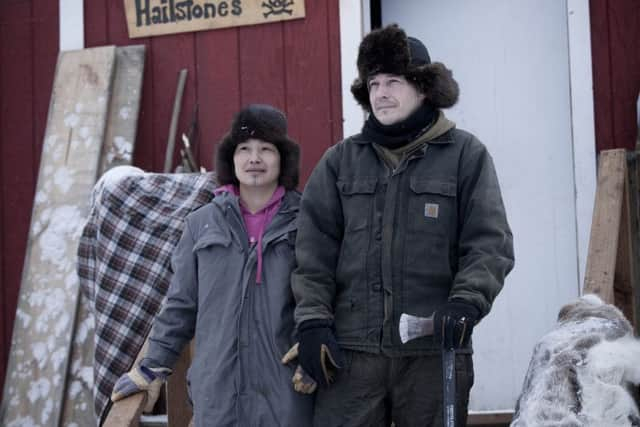

As far as Sue is concerned the bears are not in her world, she’s in theirs and when the worst happens, as it did, she’s on her own.
“I have 83 tagged grizzlies within ten miles of camp that interact with me. Human beings tend to feel they are top of the food chain but in my world I’m not. They are,” she says over the satellite phone from her home at Kavik.
Up to this point Aikens has been bright and breezy but now, talking about the bear attack back in 2007, her confident voice falters for the first time as she relives the experience.
“I can still feel on my head where his teeth went in,” she says quietly. “I was at the water and needed both hands for the pump so put my gun down. Then came the bear out of the fog and it was game on. He was a juvenile bear, climbing the social ladder and one of the ways to do that is subjugate another creature. He wanted my land. So he snatched me up and dragged me off into the tundra. An older bear would have snapped my neck and been done with it. This one wanted to subjugate me. He put his jaws round my throat and pressed. You don’t want to play dead, but you don’t want to be aggressive.”
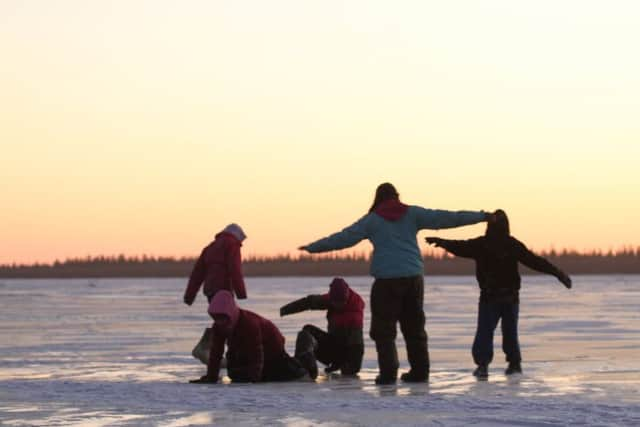

The bear continued to roll Aikens then ran off, leaving her for dead.
Advertisement
Hide Ad“I knew I was very injured and my hips were torn out of their sockets, but I had to kill him so I used my gun belt to get my hips back in.”
Aikens made it to camp, sewed her head and arm, went across the river, found the bear and shot him. Then her hips popped out again, so she dragged herself back to base and tried to radio for help, which came 10 days later when the troopers noticed her gear out in the snow. The legacy is permanent spinal problems and scars, but Aikens’ motto is, “if it hurts, don’t think about it.”
Advertisement
Hide AdShe adds, “The predators are always out there in one form or another. Fall is the scariest bear time, winter for wolves and wolverines.”
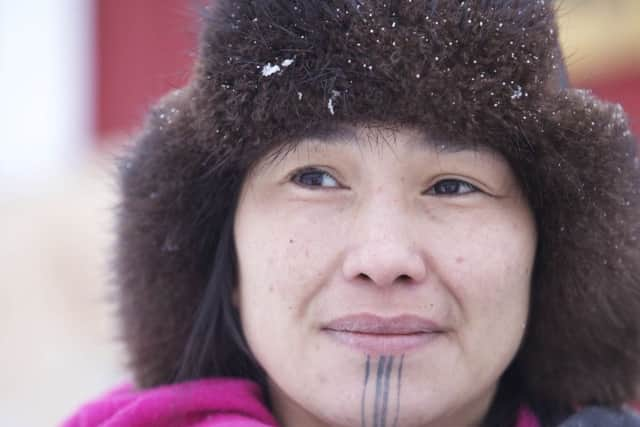

Equally hardy are Sue’s neighbours Chip Hailstone and his native Inupiaq wife Agnes, who live with their seven children on the Kobuk River in the North West of Alaska. At one with their frozen environment they hunt and ice-fish for their own food, using bow and arrow, lance, rocks or bare hands to make a kill.
Going with nature’s flow, and depending on the weather and available materials, Chip and his family move seasonally to track down the best hunt. The trips can be up to 90 plus miles away and the family set up tents in the snow or on the ice, with everyone involved in keeping the family alive: hunting, fishing, skinning, tanning, and crafting, using every single bit of the animal, to trade and barter. Some of the older daughters used to be home schooled, but now go to a local school in Noorvik when they’re not hunting.
Despite the harsh realities of their existence – Agnes has lost her mother, brother and her brother’s girlfriend to the icy water – the couple are in no doubt as to the benefits of their way of life.
“We get to spend a lot of time with our family. We know where our food comes from and that it’s fresh. We get to continue a tradition that’s been upheld for thousands of years. Even if the girls grow up and want to do other things, they’ll always be able to come back to Alaska and live off of the land. They know how to hunt for their own food, build, and many other skills needed for survival,” says Chip.
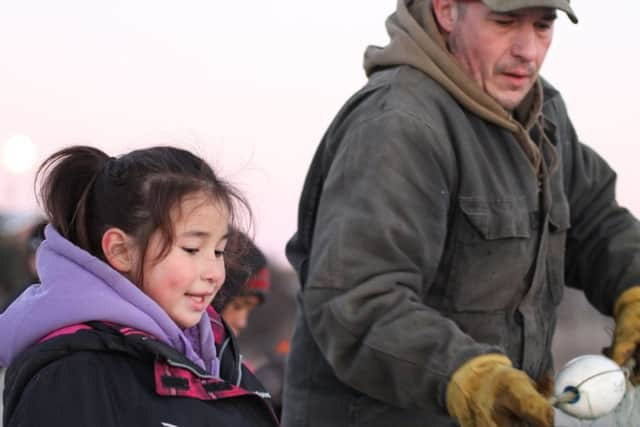

“We have the luxury of being able to do what we want to do when we want. We have no bosses telling us what to do every day because we are our own bosses.”
Advertisement
Hide AdChip grew up hunting and fishing in Montana but after he arrived in Alaska, he never left, such was the draw of the remote lifestyle. Aikens too, a Chicago native has been in Alaska for 30 years and was working as a trapper when the owner of Kavik camp asked her to become the manager.
“It’s hard to find someone who will live in remote places,” she says. “My first thought when I saw it was to cry. Ten acres of garbage and refuse, but I’ve pretty much got it cleared up now and with my wind turbines, aim to be the first green camp in the middle of the oil fields by this summer.
Advertisement
Hide Ad“I had to learn how to do things. There’s nothing you can’t learn from reading a book and asking questions. Try closing the beak and opening the ears,” she says.
Aikens sees herself as an explorer, not a hunter, whose aim is to promote the Arctic and help people respect it.
“I get a lot of ‘ologists, who are trying to unlock the why, how and what of climate change. There are bird watchers too, and hunters. I have no problem with them. But they can’t hunt the foxes, because they are my friends. If you shoot one, you’re out. One person shot one once, and I kicked him out, put him on a plane.”
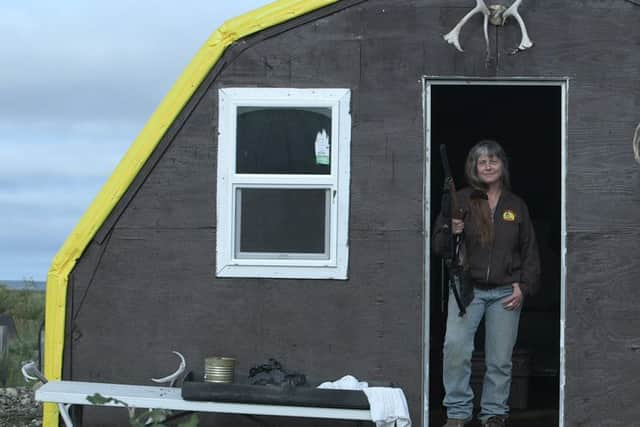

Aikens is not someone you would argue with. Very friendly and charming to talk to, she has to be tough to survive and according to the legions of fans she has attracted through Life Below Zero, is “queen of the badasses”. She does, however, have a soft spot for the Arctic foxes that live nearby.
“They’re not really tame,” says the 52-year-old. “They like me because I’ve been here a long time and never hurt them. But I don’t feed them. They have to continue to hunt. Once a bear came in and was eating them, and it was heartbreaking. One of the babies was howling and tugging at my leg, but I couldn’t help,” she says resolutely.
She relents, “OK, well, I might have been a bit clumsy and dropped things. Food things. Occasionally. So she became my buddy and she and another fox, Foxie, had kids. Then the wolves came and ate her and Foxie. But I have their kids now. Humans are social creatures and maybe there aren’t people for me to be social with. But maybe I don’t understand people to some degree. I don’t understand a society that tears itself down, people that naysay and gossip, who jump on each other.”
Advertisement
Hide AdSince she has become a presence on TV and social media, Aikens has discovered that negative feedback will find you, even if you live on the edge of the map.
“The numbers who have told me I look bad in my jeans,” she says, and laughs. “When you put yourself out there you have to have a thick skin. I’m not everybody’s cup of tea. But I say I’m fat, fifty and fabulous. And I mean fat in a good way. I’m 180 pounds of fun.”
Advertisement
Hide AdAikens was approached by National Geographic Channel to do the show, having been on Flying Wild Alaska, and agreed because she’s allowed to do her own thing.
“I won’t do anything scripted,” she tells me. “So if they say, hey, wouldn’t it be great if you fell through the ice on that river, I say, OK, you jump motherf***er, I’ll watch. Because life presents enough hardships and situations that we don’t need to invent them. You see what I am, not who you think I am.
“I smoke cigars, I’ve been known to swill a single-malt Scotch, and I swear a lot. And they didn’t try to change that.”
Aikens isn’t anti-social, on the contrary she’s very social, but it has to be on her own terms, and a camp where she has company two and a half months a year suits her need for solitude.
“Even as a three-year-old I wanted to be a lighthouse keeper. I crave isolation. I’m not lonely because I’m my best friend. I think I’m cool to hang out with. I’m hilarious. This lifestyle works for me and I don’t approach it from an emotional vantage. That’s defeatist. So I register living alone, but I’m not lonely. Sad things could happen but I’m not sad. You can acknowledge where you are emotionally and psychologically but you don’t have to make it your life. It’s a different way of looking at things,” she says.
“I never look to what I’m missing. I just enjoy what I’m doing at the moment.
Advertisement
Hide Ad“I’m at my best when alone,” she says. “It’s a combination of my isolation and the challenges that keep me inspired and on my toes. I never think I shouldn’t be living here. Tell me I can’t do something and I’m all over it. Reverse psychology works on me, though no spouse ever worked that out.” She laughs again.
Aikens has had three partners, two who died and one who left her for an “18-19 year old.”
Advertisement
Hide AdNowadays she says she’s happy on her own, and to be fair, her location doesn’t really lend itself to romance.
“A relationship should add to your existence and right now I can’t see that it would. Relationships are all about the art of compromise and I’m not willing to do that,” she says.
Not that she’s against company, and loves visits from her two grown up children who live in what she calls “the lower world” with her grandchildren. When pressed she says she’d be open to finding “a tall, burly Scot who didn’t mind the cold. And he has to go away again in the spring. And he had better know how to use a GPS!”
For the record, Alaska-bound admirers, Aikens’ ‘likes’ include Downton Abbey (which she watches on her satellite TV, single malt and cigar in hand), opera, fridge magnets and tea and coffee. She also likes to travel and has visited Scotland, where one of her best friends lives, and to receive her membership of the Scottish Arctic Club, handing over stone and samples for Arctic geology boxes that Shell promotes in Scotland. She also attributes the “explorer part of her nature” to her Scottish antecedents.
“My great grandmother came from Linlithgow. She had eight children, one of them was my grandfather who came over and led a wagon train out West. He settled in Illinois and Wisconsin,” she says.
Between October and May Aikens ignores the calendar and enjoys her solitude, but an alarm call comes in February, when the sun starts rising.
Advertisement
Hide Ad“That’s when I get my first blip of sun coming up over the horizon. It’s only a minute, before it’s dark again, but then I know in a couple of months I will have people visiting.”
Then it’s time to get the cabins ready for the summer visitors. Aikens herself chooses to live in a tent for safety reasons. With bears prowling around, it’s all relative of course.
Advertisement
Hide Ad“I can’t hear what’s happening in the cabins. And the doors swing out, so with drifts 20ft high, you’re blocked in.”
Despite her enthusiasm for Kavik River Camp and her way of life, the explorer accepts that one day she will leave.
“I’m in my mid 50s now and having things jump through the wall at you gets old.”
By “things” she means bears and wolverines.
“It’s awesome right now but sooner or later there will be something shiny and new. I might do Life Around the Equator next. Would I swing with Galapagos turtles, search for opals in Russia? Yeah! I’m sure there’s another little place on the planet that needs Sue attention,” she says. “But Alaska can get into your blood and call to you. It did with me.”
• Life Below Zero is on the Travel Channel, tonight, 10pm